YORKSHIRE FOG GRASS : Holcus lanatus
In spite of its name, this grass is common over most of the UK.
Also known as tufted grass, meadow soft grass. In America it is known as common velvet grass.
When identifying it, consider that it goes through a number of stages. When the flowers first appear in May, they form whispy elongated tufts that sway in the wind. At this point too, they are slightly purple. As they grow they loose this colour in favour of a more usual creamy grey. The leafs of course stay green for some months. Then the neat flower / seed heads begin to branch out giving each plant a different look.
The Woodland Trusts describe it better. Yorkshire fog is a softly hairy, perennial grass which grows in dense tufts up to one metre tall and can be seen throughout the year. It has a woolly appearance with flower heads tinged with purple to red and soft seed heads of grey to pink. It is considered a weed when growing on arable land.
Leaves: flat, grey-green in colour with hairs that make them look and feel soft.
Stems: softly hairy, erect, often tufted from the base and can grow up to one metre high. Compound panicle (a loose branching cluster of flowers) with crowded, single spikelets.
Flowers: single spikelets which grow on the end of the stalk and have a purple to red tinge.
Seeds: flattened, oval to tear-shaped with a surface that is shiny, grooved and hairy.
[Not to be confused with holcus mollis, known as creeping soft grass or creeping velvet grass].
The Woodland Trust also tell us that it is a food plant for the caterpillars of the small skipper and Essex skipper butterfly as well as other butterfly species. It is often grazed on by rabbits, but that it can be a nuisance in pasturage as older plants are often inedible to cows and sheep.
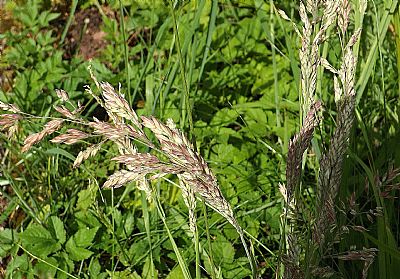
Note the purplish tinge at this early stage of growth.
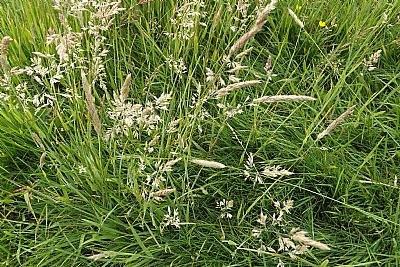
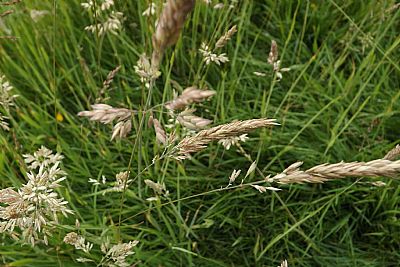
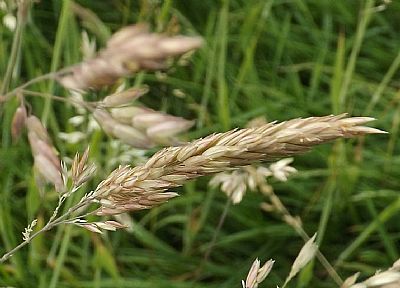
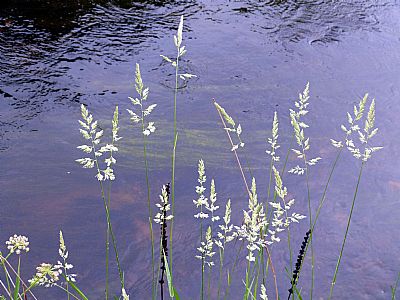
This picture was taken at the end of June with the grasses dancing with their toes in the water.
WILDLIFE TRUSTS : https://www.woodlandtrust.org.uk/trees-woods-and-wildlife/plants/grasses-and-sedges/yorkshire-fog-grass/

